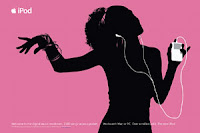So now we have moved away from Perception onto the next subject; Attention and Interpretation. According to an article in The Guardian, an average person will see around 3,500 marketing messages per day. This article also explains that a London Commuter on a 45 minute journey will be exposed to around 130 adverts which feature 80 different products. Wow that's a huge amount of adverts! However apparently only around 1% of these we will remember, therefore a massive 99% make little or no impact at all.
Advertisers use adverts as a promotional tool for products and services. They create advertisements which are used to grab the attention of a potential consumer, after this, an individual will usually interpret the campaign. Previously discussed in the Perception Blog, was the fact that the way a person perceives or interprets a product or service is totally individual and personal, "Just as people differ in terms of the stimuli that they perceive, the eventual assignment of meanings to these stimuli varies as well," (Solomon et al 2010 p132). Therefore an advert which may attract my attention for example, may be completely different to one that attracts my mum's. This usually occurs when the advertisers are trying to target and grab attention from a particular group of people, for example; men, women, children, adults etc.
This advert is clearly targeted at males and is used to grab their attention. It incorporates many interests of an average man, such as; football, a big vehicle, aggressive language and uses a very masculine character.
Whereas this Coco Pops advert is clearly aimed at children due to the use of cartoon characters, a fun catchy jingle, fast editing and bright colours. Even though this can be considered as stereotyping, many marketers will stereotype so that they can correctly target their audience. Many advertisers will 'group' people by age, class, gender, ethnicity, occupation or social role and target them through a common interest, "stereotypes act like codes that give audiences a quick, common understanding of a person or group of people." In advertising, marketers will use a common interest or concept within a group of people to attract their attention within a marketing communication. For example; the use of flowers, light colours such as; pinks and lilacs are usually shown in adverts for women. A good example of this is the Sheila's Wheels adverts.
According to Solomon et al (2010) Attention is the degree a consumer will focus on an exposed stimuli. Due to the fact that people are shown so many advertising stimuli means that marketers have to be increasingly creative to grab the attention of a potential customer. Marketers will use different methods to grab the attention of a broader range of people and not just a certain target group, but every one who sees the advert. The biggest way they do this is by using shock tactics on the audience. Shock tactics are "the use of shocking images or descriptions to force people to think about something or to do something," (macmillandictionary 2009). Marketers do this by incorporating disturbing photographs, pictures or footage into their advertisements. They usually probe a question which helps make the audience think about the message that they are trying to create. Due to the fact that most of these adverts are so shocking to the consumer, they are more likely to continuously think about it. Advertisers have used these in a number of campaigns such as;
The 'think' adverts use shock tactics continuously within their advertising campaigns. They use these to make people think about road safety and the potential impact it has. They use graphic footage and it definitely grabs attention.
The technique of shock tactics is often used by charities to help gain support and donations from the public. Many small companies who have spent little money on advertising often use them as well as people will often complain about the images and the media will report about them, which leads essentially to free advertising as the the advertisement is becoming well known through the press and word of mouth. Child abuse advertisements use shock tactics increasingly:
Another way marketers try to grab the attention of an audience is when they pose a question to the consumer (rhetorical questions) or makes a statement that makes them think about it. A good classic example of this type is the got milk? campaign which is regularly shown in America. This type of advertising is used for healthy living. It is used to make people think about the nutrients in their body and if they are receiving enough calcium. They use the phrase got milk? to make people think.
Marketers will also consider the contrast, movement, repetition, juxtapositions and size in their adverts to attract attention in a more controversial way than shock tactics.
The use of Large billboards in random places will have an impact on consumers:
Repetition is important in advertising as it is "through repetition that you establish your credibility, [and] establish brand familiarity." It continuously reminds the consumer of a brand and stimulates brand recognition. Usually with advertisements, marketers will use the same colours and images in all adverts. For example:
Due to the fact that it is very difficult to achieve an effective and attractive campaign that grabs the attention of a large proportion of the audience, marketers are continuously using new techniques to achieve this. That is the reason why adverts today have evolved so much from 10 years ago, new and old products need to grab the attention of the consumers to sell and product or service. This can be done by using a combination of techniques identified above.
To See The Guardian Article:









Amazing! So interesting to read and such great examples
ReplyDelete